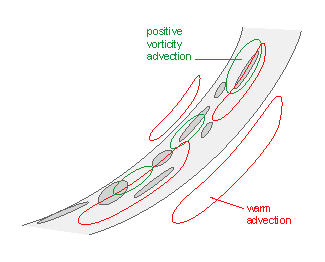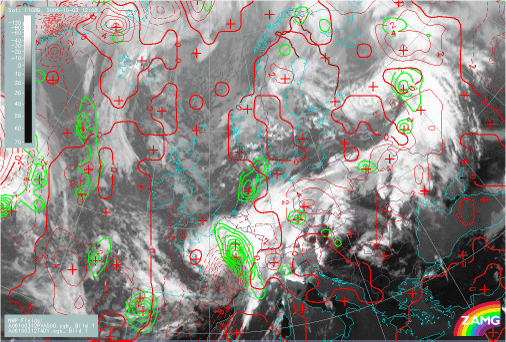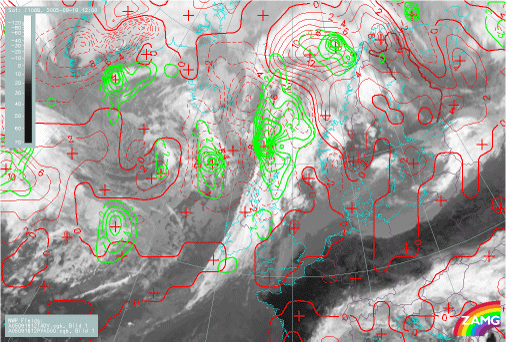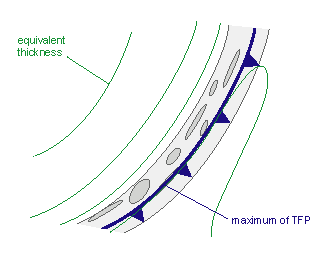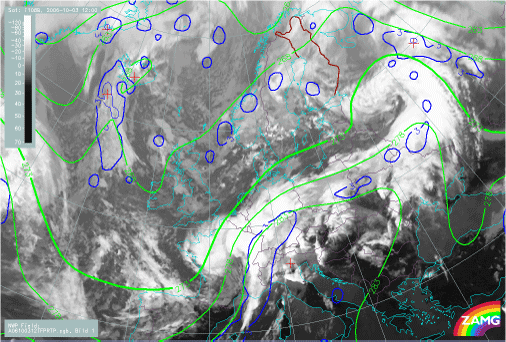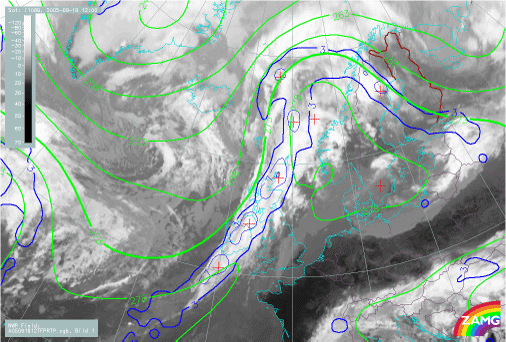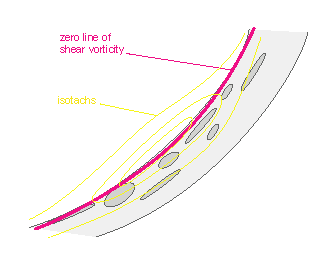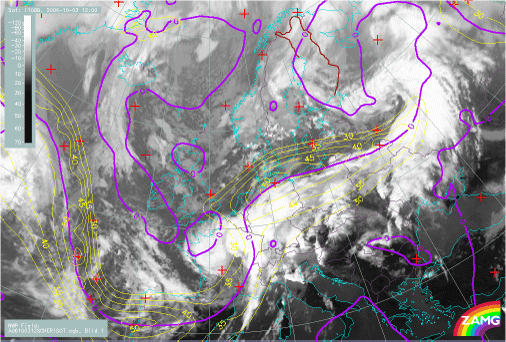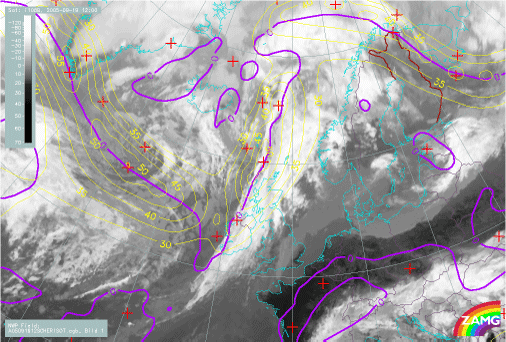Key Parameters
In this chapter the key parameters of Cold Front in Warm Advection (over Belarus and Poland) are described and compared to the corresponding parameters of a Cold Front (over Scotland).
Positive vorticity advection at 500 hPa and temperature advection at 700 hPa:
- In a CF in WA there is a maximum of PVA over the rear edge of the cloud band.
- In a CF the maximum of PVA is equally distributed, but remarkably stronger.
- In a CF in WA the cloud band is wholly under weak warm advection; some warm advection is also ahead of the front. Behind the front there is usually very little temperature advection.
- in a CF there is warm advection ahead of the cloud band and strong cold advection behind it. The cloud band is mostly under cold advection.
|
03 October 2006/12.00 UTC - Meteosat 8 IR 10.8 image; green: PVA 500 hPa, red: temperature advection 700 hPa
|
|
|
19 September 2005/12.00 UTC - Meteosat 8 IR 10.8 image; green: PVA 500 hPA, red: temperature advection 700 hPa
|
Thermal frontal parameter and equivalent thickness:
- TFP accompanies the cloud band in both cases, although in CF in WA it is weaker.
- Equivalent thickness shows a crowding zone near the rear edge of the cloud band, and a ridge ahead of it.
|
03 October 2006/12.00 UTC - Meteosat 8 IR 10.8 image; blue: TFP, green: equivalent thickness
|
|
|
19 September 2005/12.00 UTC - Meteosat 8 IR 10.8 image; blue: TFP, green: equivalent thickness
|
Shear vorticity and wind at 300 hPa:
- The zero line of shear vorticity follows the rear edge of the cloud band and coincides the jet stream.
|
03 October 2006/12.00 UTC - Meteosat 8 IR 10.8 image; magenta: zero line of shear vorticity 300 hPa, yellow: isotachs 300 hPa
|
|
|
19 September 2005/12.00 UTC - Meteosat 8 IR 10.8 image; magenta: zero line of shear vorticity 300 hPa, yellow: isotachs 300 hPa
|
